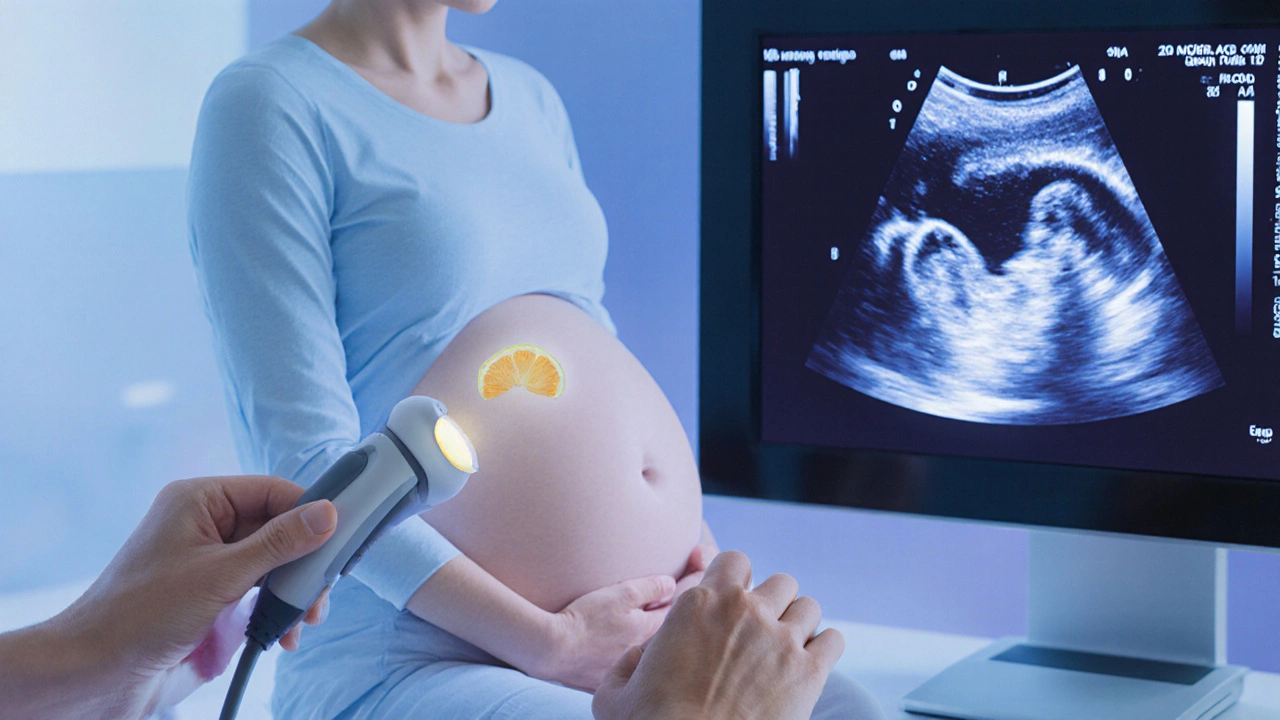When working with prenatal imaging, the use of visual technologies to evaluate a fetus during pregnancy, fetal imaging, doctors can spot development issues early and plan care. Ultrasound, a sound‑wave based scan that creates real‑time pictures of the baby is the most common tool, while fetal MRI, magnetic resonance imaging that offers detailed soft‑tissue views helps when ultrasound findings are unclear. Detecting fetal anomalies, structural or functional irregularities in the developing baby often guides decisions about delivery or treatment.
The first trimester is when the embryo’s basic structures form, so a nuchal translucency ultrasound, a specialized scan to measure fluid at the back of the neck can flag chromosomal concerns. In the second trimester, a detailed anatomical scan maps organs, limbs, and the spine, giving a clearer picture of any potential structural anomalies, such as heart defects or spina bifida. By the third trimester, growth‑rate checks assess weight and amniotic fluid, while fetal MRI may be ordered to evaluate complex brain issues that ultrasound can’t resolve. Each window leverages the strengths of its imaging modality, ensuring a comprehensive view before birth.
The power of prenatal imaging lies in its ability to combine safety with detail. Ultrasound uses non‑ionizing sound waves, making it safe for both mother and baby when performed by trained sonographers. Fetal MRI, though more expensive, also avoids radiation and offers superior contrast for soft tissues, especially in the brain and spine. Both techniques require skilled operators who understand fetal positioning, gestational age norms, and how to interpret subtle signals. These expertise requirements influence the quality of the scan, meaning that a high‑quality scan can reveal problems that a less‑experienced practitioner might miss.
Beyond detection, imaging guides management plans. When a heart defect is seen on a second‑trimester scan, the obstetric team can coordinate with pediatric cardiologists for delivery at a specialized center. If a brain abnormality appears on MRI, families receive counseling about potential outcomes and post‑natal interventions. Imaging also informs decisions about timing of delivery—some conditions warrant early delivery, while others are safer if the pregnancy reaches term. This close link between imaging findings and clinical pathways underscores why timely, accurate scans are a cornerstone of modern obstetric care.
Insurance coverage and access can vary, but most health systems recognize the importance of at least two routine scans. Public guidelines typically recommend a first‑trimester dating scan, a second‑trimester anatomical scan, and a third‑trimester growth scan when indicated. Private clinics often offer additional “enhanced” ultrasounds that focus on gender, facial features, or detailed fetal movement, though these are optional and usually not medically necessary. Understanding what each scan provides helps families ask the right questions and avoid unnecessary procedures.
Technology continues to evolve. 3‑D and 4‑D ultrasound add depth and motion, giving parents a clearer view of facial expressions and limb movements. Advanced software now provides quantitative measurements of organ volumes, improving the detection of subtle growth restrictions. Meanwhile, low‑field MRI units are becoming more affordable, potentially expanding access to detailed fetal brain imaging in community hospitals. As these tools improve, the overall accuracy of prenatal diagnosis rises, giving clinicians more confidence and families more peace of mind.
Below you’ll find a curated collection of articles that dive deeper into specific imaging modalities, trimester‑specific scan protocols, and how to interpret common findings. Whether you’re looking for practical tips on preparing for an ultrasound, guidance on deciding if a fetal MRI is right for you, or insights into managing a diagnosed anomaly, the posts ahead cover the spectrum of questions expectant parents often ask.

Learn how ultrasound spots spina bifida in unborn babies, the key sonographic signs, when fetal MRI adds value, and what preventive steps can lower risk.